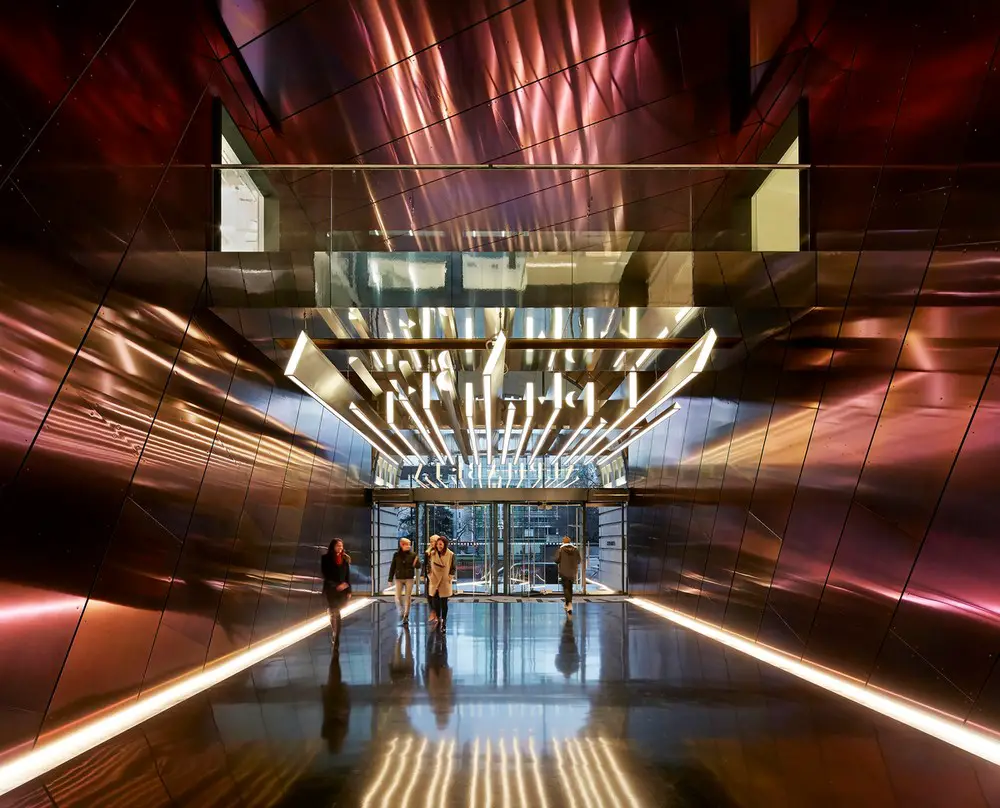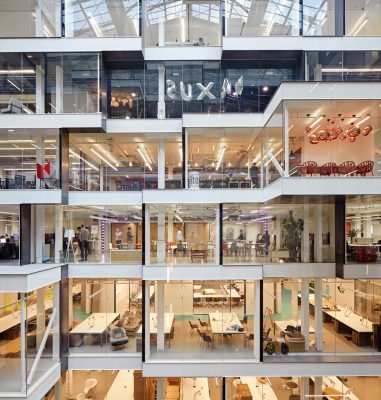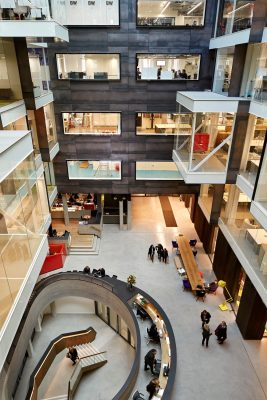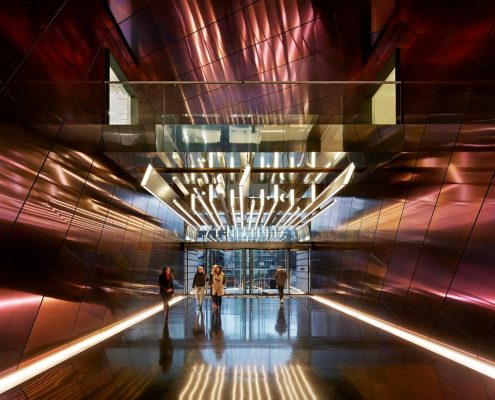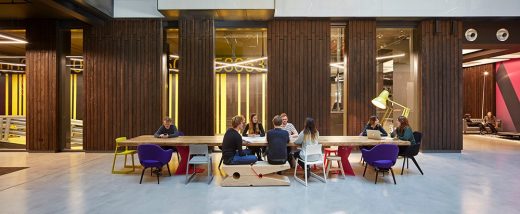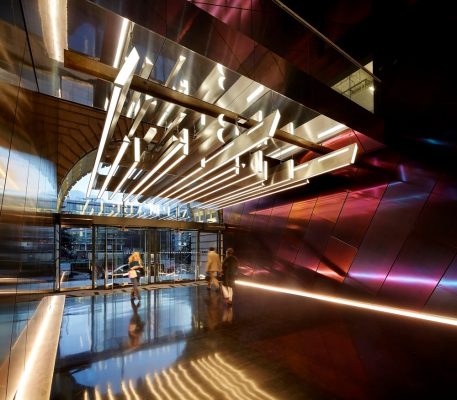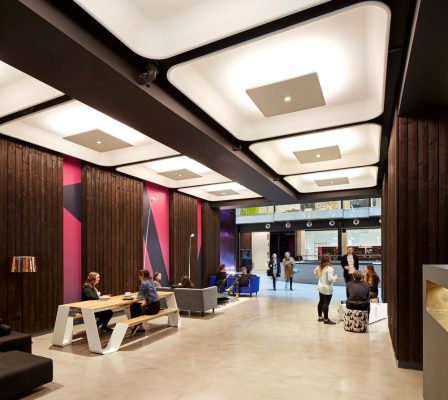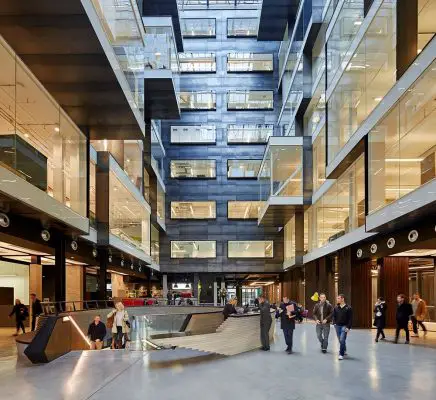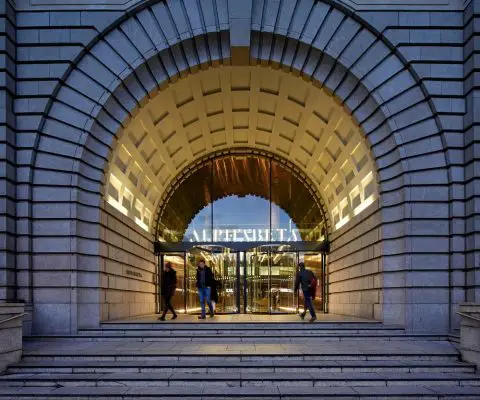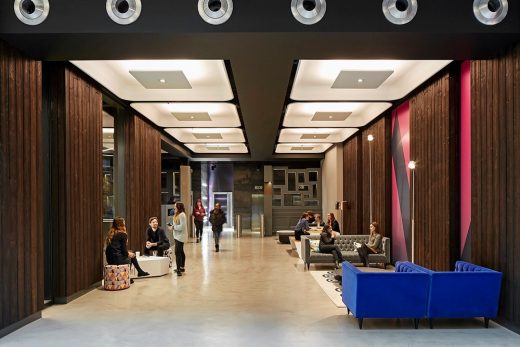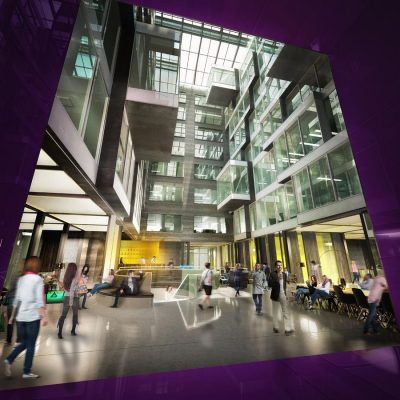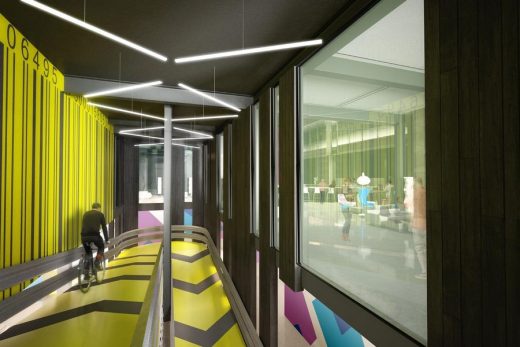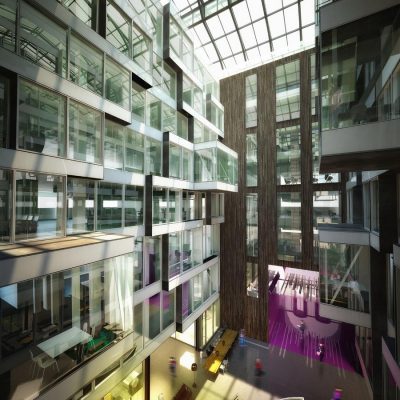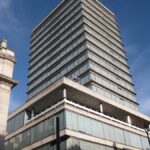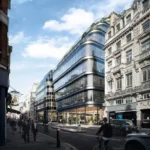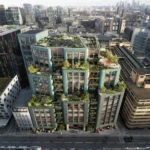Alphabeta Finsbury Square Redevelopment, Northeast London shared workspace building, UK architecture, Architect
Alphabeta London Finsbury Square
Triton Court Development, Finsbury Square, England design by Studio RHE Architects.
post updated 8 December 2024
Design: Studio RHE
Location: Finsbury Square, London, England, UK
Photos by Nick Hufton, Al Crow
Updated 10 Jan 2022 + 5 Mar 2013
Alphabeta Finsbury Square
Alphabeta is the melting pot for Two Tribes; the City’s financial sector and the new Creative Media and Tech industries. An energetic shared workspace that straddles the divide and creates a new home for ideas to make money.
The Atrium no longer functions solely as a demonstration of wealth and power, having been reimagined as a common area for the immediate discussion of ideas and possibilities in a collegiate and comfortable surroundings.
Transparent meeting rooms cantilever above the shared space and a cycle ramp running indoors from the street is celebrated with highly visibility glass.
The 24,000 sqm offices were built over 24 months and involved additional stories and entire remodelling of three tired buildings. Studio RHE provided both Architectural and Interior Design for this ground breaking space.
In 2016 the Alphabeta Building received design Awards from the RIBA, British Council for Offices and the Office Agents Society.
Alphabeta Finsbury Square – Building Information
Project size: 24000 sqm
Project Budget: £45000000
Completion date: 2016
Photography: Nick Hufton, Al Crow
Triton Court Building Redevelopment
Finsbury Square Building Development
On the North side of Finsbury Square an heroic tower looms towards the sky. Dressed in an imposing classical architecture and adorned with statues of ancient Gods, this once proud bastion is Triton Court, an icon from a bygone era. Gazing from the scruffy periphery of the ‘CIty’ to the reinvented skyscraper skyline to the South, Triton Court feels at odds with its time and uncertain of its role.
Surrounding it to the Northwest lies the ‘City Fringe’. Here, faceless sanguine buildings offer low rent fast turnover, occupied by small businesses. Tired and outdated, they are relics without an identity – and more crucially – without tenants.
But to the North‐East is Shoreditch, the much vaunted home of art studios, cool bars and in their wake TEC industries and Nathan Barley. This is the home of the fabled hi‐tech saviors of our harsh economic times; Google and Mind Candy sit just one street away, and grown up hipsters shuffle between bars talking of startups, crowd funding and new ways of working.
In the summer of 2011 Studio RHE (long-term Shoreditch residents) were asked whether the 250,000ft² empty broken City behemoth that is Triton Court could become part of the new world that sits so tantalisingly close.
No, not with the 1980s marble‐lined, wide‐shouldered power dressed atrium that it has worn for the last 30 years… But if re‐imagined maybe it could become part of a new scene and even keep its toes in the formal City, becoming a favourable staging post for those industries that straddle the boundaries – media, technology and telecoms.
The start‐ups that piled into the Shoreditch warehouses in the 1990s proved there was profit to be made without carpet tiles and spider plants. Employees were more productive if they could do what they wanted in a space that felt like home. Profits soared, work became play and bemused city workers who strayed too far north stumbled into design agencies asking for cocktails. The lesson is now being heard beyond the niche bohemian enclaves and progressive firms across sectors are realising that they’ll lose the next generation of talent if they can’t rethink the ways they work, and the spaces they work in.
To interest these burgeoning new users, Triton Court was renamed Alphabeta, stripped back to its historic core and redesigned from the inside out. It started with a strong new direct route through the building from Worship Street (Shoreditch) to Finsbury Square (City). The existing Atrium was remodeled and an active arena created; meeting spaces, restaurants, bars, coffee areas, a library, a concierge and the ultimate celebration of cycling ‘fixie culture’ – a black and yellow barcode ramp that literally flies through the Atrium. The ramp leads direct to the huge secure storage areas with changing rooms and mechanics area. Adjacent are the play areas ‐ a new basketball court, yoga studios and no doubt pumping gym.
The light filled Atrium is celebrated with a series of projecting glass meeting rooms that emphasise the height and interrupt the vertical space, helping to create a new working area rather than a grand reception hall. Why meet in your office when the ground floor has everything you want and is entirely comfortable? As the distinction between home and work life is eroded, occupants can choose to work from this vibrant area with their own connected devices, swap ideas and socialise while working.
A range of materials has been chosen for their international urban cues as much as for their visual interest and patination possibilities. Mild steel detailed with cues of Catalunya meets charred Scandinavian larch, either side of huge toughened glass panels.
The office interiors, designed to achieve a ‘Very Good’ BREAM Rating, offer exciting architectural details. Layers of corporate fit‐out have been torn back to reveal finely detailed plaster cornices, ornate cast iron columns and riveted steel beams. To ensure the ceiling heights and natural light are maximised, ceiling services are left exposed, with the central ducting sitting ingeniously behind a patterned metal screen integrated with LED lighting.
Using their experience of designing unique hotels and resorts, Studio RHE create a new rooftop realm of decked areas and lush planting beyond a new slate and glass addition offering amazing views of the City, Shoreditch and the HAC sports ground.
Here you can get close to the heavily decorated stone tower and statues that have created the genuine iconic status of the existing building.
With the new design has come a new name and rebranding of the building; ‘Alphabeta’ represents the next phase in this unique building’s life, and a physical representation of the fast‐shifting landscape that surrounds the bronze Mercury – the wing‐heeled messenger to the Gods who graciously flies from the top of the tower.
Alphabeta London information / images received from Studio RHE
Triton Court building on north side of Finsbury Square:
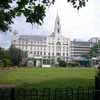

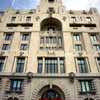
photographs © Adrian Welch
Location: Finsbury Square, London, England, UK
London Buildings
Contemporary London Building Designs
London Architecture Links – chronological list
London Architecture Tours by e-architect
London Buildings – Selection
Architects: Barry + Pugin
Houses of Parliament Building
unknown
Westminster Abbey Building
Finsbury Circus Office Building
Fletcher Priest Architects
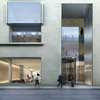
picture © Fletcher Priest Architects
Finsbury Circus Office Building
Finsbury Square – office building by Eric Parry Architects
Finsbury Park Residential Building
Comments / photos for the Alphabeta – Finsbury Square London Architecture design by Studio RHE Architects page welcome.
Website: www.alphabetabuilding.com

